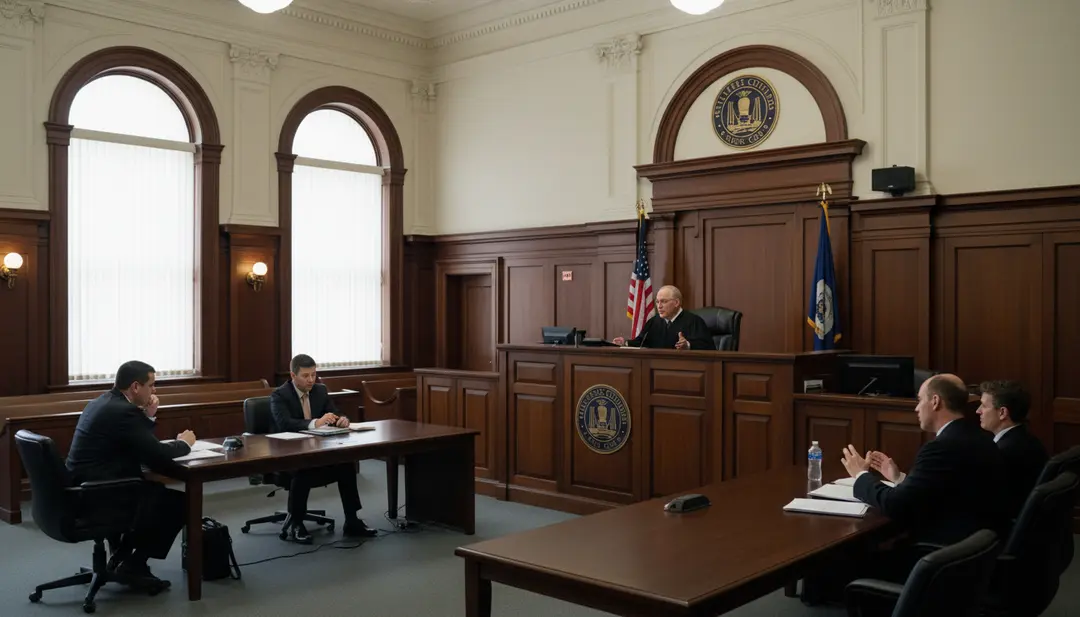How HOA Creditors Should Calculate and Track Pre-Petition Claims
When an owner files bankruptcy, the petition date is the line in the sand. It is the day the case is filed, and it splits all amounts owed into two buckets, old and new – pre and post petition. For you, as an HOA creditor, that date starts the automatic stay, stops collection of pre-petition debt, and locks everything owed up to that moment for a future claim.
If you handle assessments, fines, and liens for your community, you must be able to tell pre-petition vs post-petition debt apart with precision. Your job is to freeze and document the pre-petition balance, keep post-petition billing clean, and avoid any step that could be treated as a stay violation. This guide shows you how to read the petition date as a bankruptcy creditor, calculate clean pre-petition numbers, and track two ledgers from notice to proof of claim.
At Halk, Oetinger, and Brown, you get a team that focuses on efficient, results-driven HOA collection. We represent hundreds of Arizona communities with flat-rate general counsel services and an industry-leading collection program at no cost to the Association. You get clear guidance, fixed pricing, and a calm path through complex situations like owner bankruptcies.
Why the bankruptcy date matters to HOA creditors
The petition date triggers the automatic stay under 11 U.S.C. § 362. This stay halts collection efforts on pre-petition debt. Everything owed up to the day before filing is pre-petition. Anything that arises on or after that date is post-petition. In a voluntary case, the petition date also serves as the order for relief, which makes the stay effective right away.
What must pause:
• Demand letters, collection calls, and emails that ask for payment on pre-petition debt
• Filing new lawsuits or continuing cases based on old balances
• Recording or enforcing liens tied to pre-petition amounts
• Applying new payments to old balances unless a confirmed plan allows it
What may continue, after consulting with your HOA attorney:
• Billing new post-petition assessments and other post-petition charges
• Keeping internal records and separate ledgers
• Stop adding late fees and interest to the pre-petition bucket as of the petition date
Control risk from day one. One wrong notice or misapplied payments can trigger a stay violation. Verify the petition date from the court notice or docket, calendar relevant deadlines for objections and hearings, and circulate an internal freeze order to staff and managers the same day.
The automatic stay starts on the petition date
Blocked for pre-petition debt:
• Collection calls or texts
• Demand emails or letters
• Filing new suits or moving old suits forward
• Recording liens for old balances or enforcing existing liens
• Account statements that look or read like a demand
Safe actions:
• Internal accounting and clean ledger work
• Communication through the debtor’s attorney
Some clients elect to add a disclaimer to every post-petition statement after ledgers are split between pre- and post-petition assessments. It’s also common to simply monitor the case for a dismissal or a discharge since the assessment lien survives the bankruptcy.
Debt cutoff: what counts as pre-petition
For an HOA, pre-petition items usually include:
• Unpaid regular assessments
• Unpaid special assessments adopted before filing
• Late fees accrued before the petition date, if supported by the CC&Rs
• Collection costs and charges allowed by the governing documents
• Attorney’s fees and costs permitted by the declaration, bylaws, or collection policy
Stop interest and late fees on the pre-petition balance as of the petition date, unless your counsel directs otherwise.
What can continue after the petition date
New assessments billed after the petition date continue to accrue. Post-petition assessments remain the owner’s personal responsibility while they own or occupy the property. Keep a clean line between old and new.
Generally, payments from the Trustee are applied to the pre-petition ledger and payments by the homeowner for accruing assessments are applied to the post-petition ledger.
Special assessments, payment plans, and installments
If your board adopted a special assessment before the petition date, the owner’s obligation usually arose at adoption, so it is a pre-petition claim. That stays true even when installments are due in the future. If the board adopted the special assessment after the petition’s filing, treat it as post-petition.
Check your declaration and bylaws, and confirm with counsel based on Arizona law if there are installment payments on the special assessment.
Collect the documents you will need for a proof of claim
In order for your attorney to file a proof of claim, they will need:
• The recorded declaration and bylaws
• Your written collection policy and any board resolutions that set fees
• Board resolutions for special assessments
• The full account history and ledger
Chapter 13 plans can change payment flows and how you apply trustee payments.
Keep post-petition billing separate and stay-safe
Send separate statements for post-petition charges. Add a short, neutral note that the account is subject to a pending bankruptcy, and that the statement is for information only. Route any pre-petition questions through debtor’s counsel.
Apply payments to the post-petition ledger first unless a confirmed plan says otherwise. Never net post-petition payments against a pre-petition balance without permission from counsel or the plan.
Key timelines and action steps from notice to discharge
Use a simple schedule. Busy boards and managers can stick to it and reduce risk.
Day 0 to 7: Freeze and verify
• Stop all collection on pre-petition debt
• Confirm the petition date, case number, and chapter
• Notify the manager, bookkeeper, and HOA counsel
• Create two ledgers, pre-petition and post-petition
• Add a stay warning banner to the account profile
• Start gathering documents and governing records
Day 8 to 30: Audit and calculate
• Reconcile the account history
• Run proration for the filing month
• Build and lock the pre-petition ledger
• Mark secured vs unsecured components if your state gives an assessment lien right
• Have a second person review the math and labels
• Freeze the pre-petition totals for the proof of claim
Before the bar date: File and follow up
• Prepare and file the proof of claim using Official Form 410
• Attach the pre-petition ledger and supporting documents
• Calendar the 341 meeting and plan deadlines
• Track any objections and respond on time
• Keep a complete case folder with all filings and notices
After filing: Monitor, apply payments, and close out
• Watch for plan confirmation and the trustee’s payment schedule
• Apply trustee payments to the pre-petition claim per the plan
• Bill and collect post-petition assessments separately
• If the owner surrenders or the property sells, adjust ledgers and update your claim
• Close the pre-petition claim when paid or discharged and send a clear final statement for your records
Why work with Halk, Oetinger, and Brown on HOA bankruptcy issues
You want predictable cost and strong results. Our attorneys and staff do over 90 percent of their work at flat rates, and our assessment collection program is at no cost to the Association. We focus on solving problems, not billing hours. You get fast answers, clean documents, and claims that stand up to review.
We serve planned communities and condominiums across Arizona. With covenant enforcement, assessment collection, governance, and litigation services, you get one partner for the full life cycle. When you need to split charges by the petition date, file on time, and avoid stay issues, our team is ready to step in and help you move with confidence.
Conclusion
The petition date draws a hard line. You must separate amounts into pre-petition vs post-petition debt, pause collection on the old bucket, and track both sides with care. A simple process, two clean ledgers, and on-time filing protect your HOA’s rights and reduce risk.
Quick checklist: confirm the date, freeze, calculate, document, file, and monitor. Build a standard workflow now and train staff, so when the next notice arrives, you act the same day with calmness and control. If you want help setting up your process or filing your next claim, reach out and we will guide you from notice to discharge.












![Does an Arizona HOA Need to Update AZCC Records After Changing Management Companies? [2025 Guide]](https://cdn.prod.website-files.com/66b97099f8f1d06c15fb6dbe/68bf09165df481aa44c0f29d_corporate-change-management-leadership-transition.jpg)